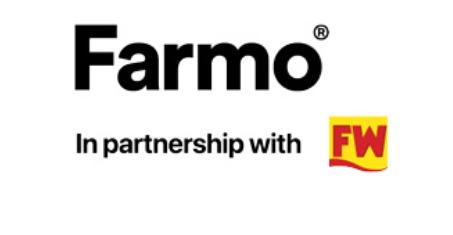Farmer Weekly journalist blogs on food and farming in the USA

SUNDAY 19 NOVEMBER
Sitting on the BA flight to Boston last Sunday, I wondered whether my visit to take part in a conference-cum-think-tank that afternoon was the best use of my time. Knowing that my visit would be short, any thoughts of being able to enjoy the spectacular Boston Fall had been put to the back of my mind. But as we approached Boston airport those thoughts were firmly dashed. I was a tad too late – not a leaf to be seen on any trees, let alone any red, orange or yellow ones.
My schedule was tight: The plane was due to land at 1pm and the conference, near Harvard Square, started at 3.30pm. Despite warnings of 2 hours delay in customs, I breezed through the airport and was comfortably in time for the 13th annual PAPSAC meeting.
PAPSAC is an unwieldy acronym for an even more unwieldy title – The Private and Public, Scientific, Academic and Consumer food policy group. It’s the brainchild of Ray Goldberg, emeritus professor of agriculture and business at Harvard Business School.
Together with John Davis he developed the Agribusiness Program at Harvard Buisiness School in 1955 which has won world-wide acclaim. He’s the author or co-author of 23 books, 110 articles and more than 1000 case studies on various global food issues. And, yes, he is certainly getting on a bit in years. But today, he is as enthusiastic and committed to taking forward the US agricultural industry as ever.
His role in this project is to bring together parties from all sides of the agricultural divide – mostly within the US but also some from the over Pond – in an attempt to focus on the food challenges facing consumers and society. There were some very high level US goverment policy makers including EPA and under secretary of agriculture.
I was one of five UK representatives, along with NFU president Peter Kendall, Cirencester’s vice-principal Paul Davies, ABNA ceo David Yiend and British Sugar’s Finance Director David Langlands. Apart from Paul, none of us had attended before and were not quite sure what to expect.
As the afternoon wore on we started to get a feel for the meeting. Between 3.30 and 9.30pm we were to hear 10-minute presentations from a range of high level US agri-industry, political and research figures. Ray was a fantastic time keeper, ensuring lively debate after each session. Questions and comment were never difficult to enlist and it was a privilege to hear such frank openess from so many high profile individuals.
So what are the big US food issues?
Obesity, if you will pardon the pun, is the heaviest item on their agenda. Two thirds of all Americans are overweight and 10% are classified as obese; 3% are morbidly obese.
Although there is a strong social movement that is embracing organic and natural food, animal welfare, farmers markets and school education in order to help change the US food culture there is a consensus that this will not tackle the enormity of the problem.
The organic market has grown from $10 to $16bn in three years and there is an increasing focus on diet quality as Americans. However, the increasing obesity in children will reverse the increases in life expetancy that have been achieved in recent years.
Obese children grow up to become morbidly obese adults where there is no effective treatment. The stark warning is that these people will develop heart and diabetic problems that will ultimately cut their lives short.
Transfats are an underlying issue in the fight against obesity and US scientists are working hard to modify the fatty acid profile of soybean, which is the single biggest oil in the US.
High linoleic acid and stearate soybeans are on the horizon from DuPont, Monsanto and Pioneer. It’s not an immediate fix because they won’t make a significant impact on the market for several years.
Meanwhile a shift in processing, labelling and education are helping to remove these from US diets. New York is putting forward a proposal for all its restaurants to ban transfats in their food.
Yet America is such paradox of plenty. At one end 10% of the population are obese and are eligible to receive a gastric bipass to staunch further weight gain. At the other of the spectrum 10% of the population – and that applies to Boston as it does in every US city – are malnourished.
Add to that the enormous debt that the US carries – $8.6 trillion and growing – and you begin to wonder what’s going on.
Bioethanol is another burning issue for the the States. Production has been boosted by a raft of subsidies and import protection.
Oil companies receive 51 cents for each gallon of ethanol used and and farmers who increase the amount of crops devoted to ethanol are also rewarded. There is a 54cent per bushel subsidy on corn (that’s maize to you and me), which is the main feedstock for ethanol production.
Bioethanol plants are springing up all over the US. But the ‘bioethanol frenzy’ is hitting the cattle and poultry producers, of course, who are footing the bill for $6bn and $100m additional feedstock costs respectively because of the corn subsidy. Producing bioethanol is a get-rich quick option and it seems as if everyone wants to be on the band waggon.
There was a clear acknowledgement that new technologies for producing cellulose and anaerobic digestion are now needed to avoid being dependent on an industry that is out of proportion to the subsidies provided to other energy producing sectors.
But what about the environmental credentials of renewable and non-fossil fuels? That part of the debate was missing entirely on Sunday with Climate Change nowhere on the radar.
After dinner, presentations resumed until 9.30pm. It was at that point that those who had travelled from Heathrow that day started to struggle. Our body clocks were telling us it was 1.30 in the morning.
But then I wonder if the same applied to the other 70 or so US delegates because there was mass exodus to our hotel rooms for a decent night sleep.
MONDAY 20 NOVEMBER
Next morning I heeded the obesity warning by taking a dip in the pool of the hotel. This is where the Americans really excel – it is so easy to take excercise here.
A fantastic 3-lane pool, gym and jacuzzi all on the third floor of our hotel. You don’t have to walk far to find it. It’s open at 6am and manned by extremely friendly staff and doesn’t cost a thing. Plus there are towels, shampoos and soaps in abundance. I don’t find that at my local £500 a year club in Sussex.
At breakfast I was surprised to see an image of cookies, and not cows, on the ‘skinny’ milk carton label. I asked my US colleagues the significance of the cookies? Like me they were mystified and agreed that the disconnect between food and farm had reached cookie-like proportions.
Refreshed with cereals and scrambled egg off we went to hear the first of five more 10-minute presentations kicking off at 8am.
Traceability has become a big issue in America following some health issues surrounding E-coli contamination in fresh spinach. Unlike the UK there is no voluntary code of practice and this is something that neither producer or processor is willing to implement. Instead, there was a real call from all the key stakeholders in the food chain to have strict government regulation on traceability.
One of the most important presentations for me was that delivered by Robert Thompson, who chairs agricultural policy at Illinois University and has just co-authored a book that spells out how to modernize America’s Food and Farm Policy
You could be forgiven for having a sense of deja vu when you read this book, since the suggested measures of removing trade-distorting subsidies in favour of supporting environmental targets might seem more than a little familiar to farmers in the UK and Europe.
So, although environment and conservation were lacking in yesterday’s proceedings it is at the heart of Prof Thompson’s change agenda for US farming with a ‘mandate of ambitious goals for environmental performance’ by decoupling support from production over a 5-year transition period.
But America is not going to leave its farmers unprotected; he advocates a multicommodity revenue insurance. This is a safety net for all farmers, which will protect against market and yield falls. He hopes it will lead to less market intrusion, less distortion and greater entrepreneurship.
Local reward: this card is the brainchild of Greg Stetenpohl who is enabling Boston buyers to cash in on local purchasing. They receive up to 3% back on any local purchases. |
|---|
Prof Thompson also suggests taking 20% of the direct subsidies to farmers to fund `public goods’ such as connecting all rural communities to broadband. He suggests Farmer Savings Accounts, similar to tax deferred accounts, backed by Government matched contributions which could be used for farmhouse costs, health care, education and early retirement.
Sitting next to me, Peter Kendall (NFU president) must have wondered at this committment to the farming industry as he still waits for some of his members to receive their single farm payments.
My conclusion?
America is in so many ways forging way ahead of the UK and Europe – and there is much for us to learn, in particular on renewable energy and GMs. But the focus on all issues seems to be to find tecnhological solutions, such as the move to breed out transfats from their oils.
But are technological innovations really going to solve the enormous social problem of obesity? I doubt it very much.
Key US food and farming challenges for America today
|
|---|
Other useful sites:

